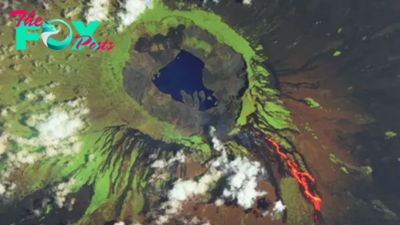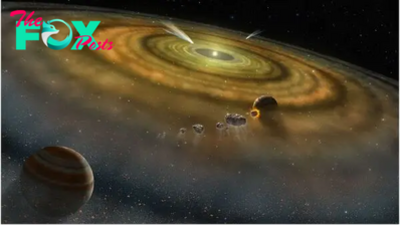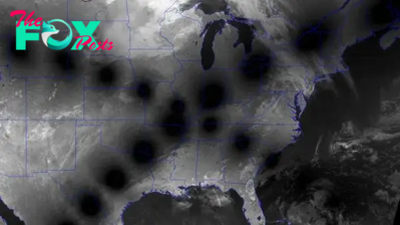Science
NASA only needs a single grain of ice to detect alien life in our solar system, study shows
Spacecraft flying through ice plumes in space could help scientists spot alien life — even if it's only tiny bits of a cell in a few grains of ice, lab experiments have revealed for the first time.
If alien life resides on Saturn's moon Enceladus or Jupiter's Europa, enormous geysers blasting out of the moons and into space are currently the most accessible way to find evidence of it. As recent studies of Enceladus have shown, these powerful plumes originate from each moon's vast subsurface ocean and spew out into space via cracks in their icy shells, ferrying ice grains that scientists think could be infused with bacterial cells and other organic molecules. Spacecraft flying through these plumes can then identify signs of life that may be encrusted in the ice, the new research shows.
"It's just astonishing how well we can identify a bacterial cell in these grains," Fabian Klenner, a researcher at the University of Washington in Seattle and lead author of the new study, told Live Science. "Even if there is only a tiny fraction in a handful of grains, we can find it with these instruments."
By sampling and analyzing plumes of Enceladus and perhaps Europa, scientists can learn whether life-friendly molecules exist in their subsurface oceans. But of the hundreds of thousands of ice grains blasted into space by these icy moons, bacterial cells may be concentrated only in a tiny number of them.
Related: NASA unveils cryptic message from Earth to be sent to Jupiter's icy ocean moon Europa
Cells on ice
To simulate such a scenario in a lab, Klenner and his team mixed cells of freeze-dried bacteria named Sphingopyxis alaskensis in liquid water such that there was one bacteria cell in every droplet, on average. Commonly seen in Alaskan sea waters, S. alaskensis lives in cold environments and can survive on low nutrients, "which makes it a better analog than many other organisms that we know from Earth," Klenner told Live Science.
"They are extremely small, so they are in theory capable of fitting into ice grains that are emitted from an ocean world like Enceladus or Europa," he said in a statement.
-

 Science1d ago
Science1d agoEarth from space: Lava bleeds down iguana-infested volcano as it spits out toxic gas
-

 Science1d ago
Science1d agoJupiter may be the reason why Earth has a moon, new study hints
-

 Science2d ago
Science2d agoSpace photo of the week: Little Dumbbell Nebula throws a wild party for Hubble telescope's 34th anniversary
-

 Science2d ago
Science2d agoEclipse from space: Paths of 2024 and 2017 eclipses collide over US in new satellite image
-

 Science4d ago
Science4d agoHundreds of black 'spiders' spotted in mysterious 'Inca City' on Mars in new satellite photos
-

 Science5d ago
Science5d agoScientists find one of the oldest stars in the universe in a galaxy right next to ours
-

 Science5d ago
Science5d agoEerie, orange skies loom over Athens as dust storm engulfs southern Greece
-

 Science5d ago
Science5d agoHidden 'biosphere' of extreme microbes discovered 13 feet below Atacama Desert is deepest found there to date

























